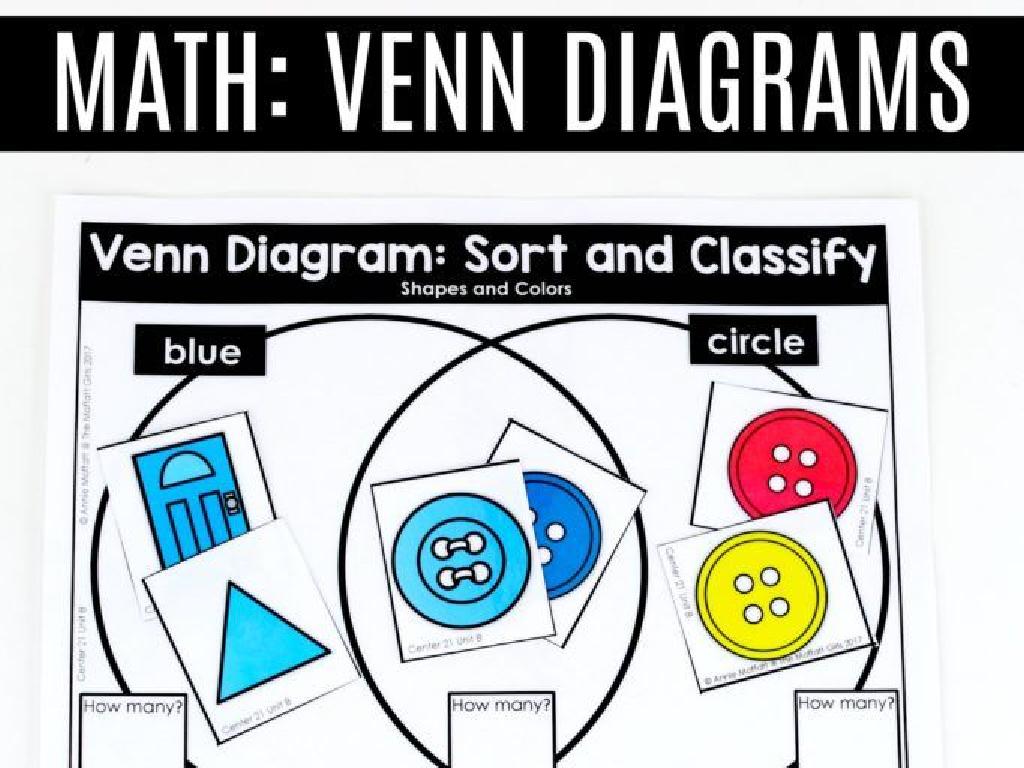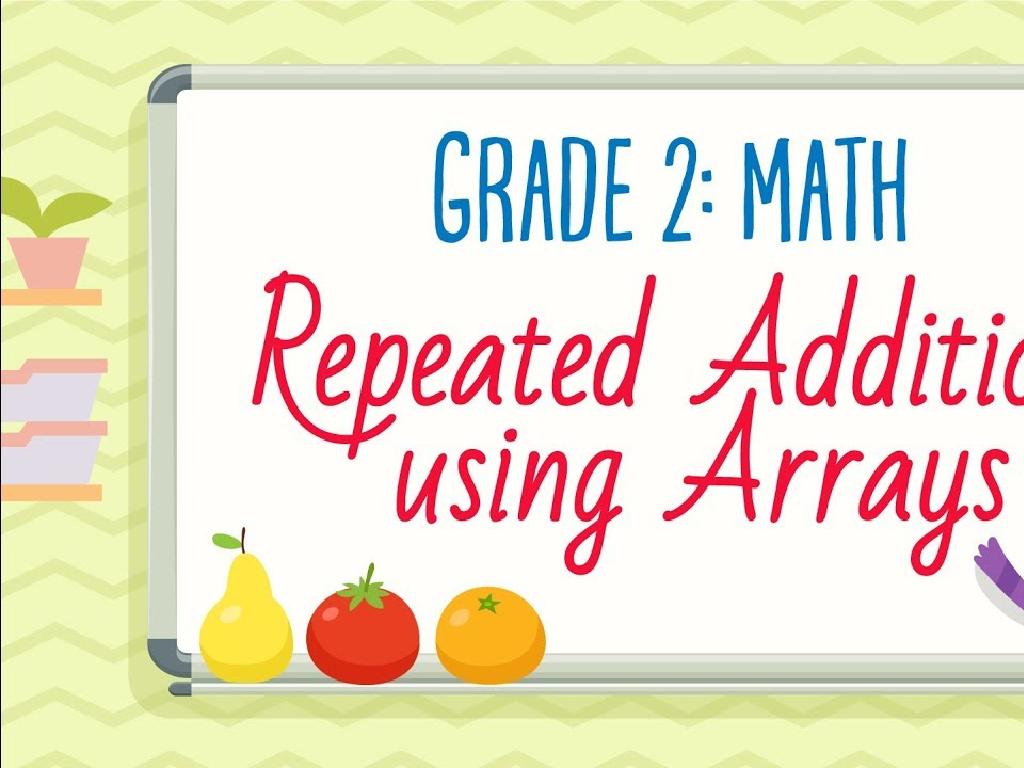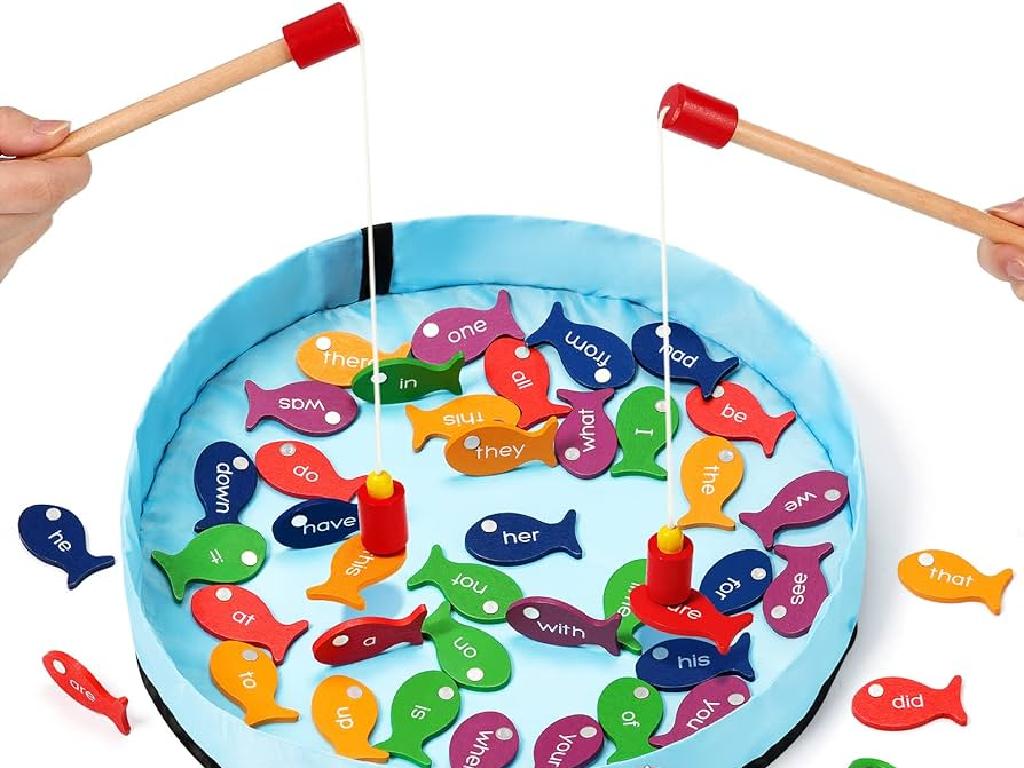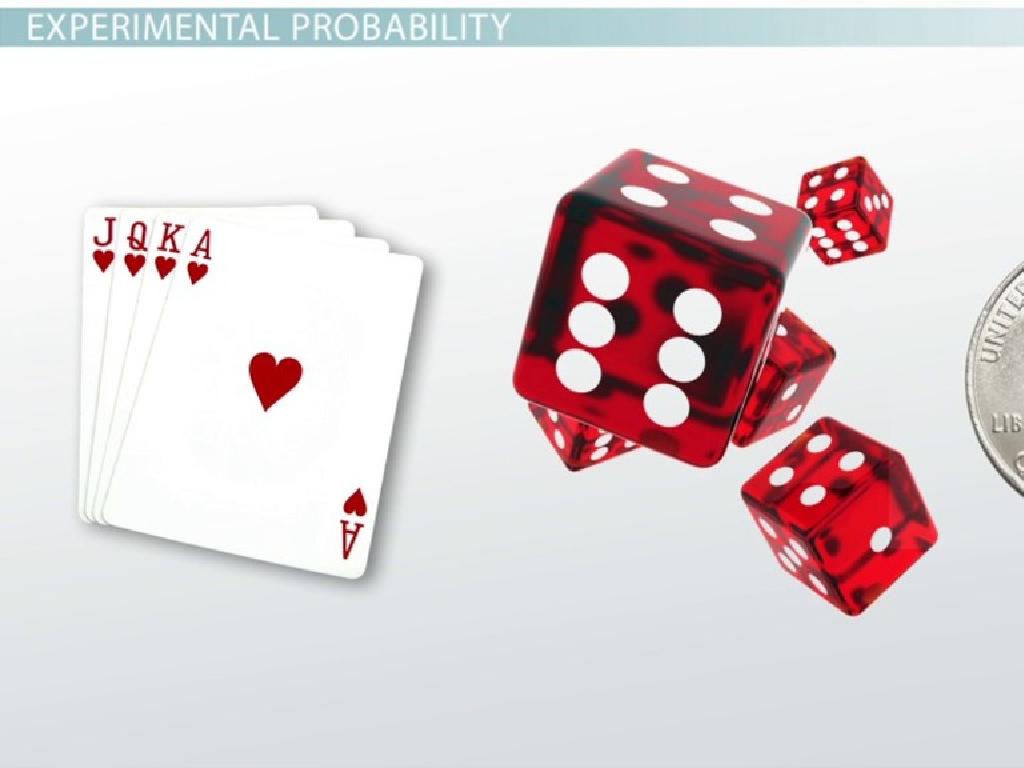Months Of The Year
Subject: Math
Grade: Second grade
Topic: Calendars
Summary: This engaging second-grade math presentation explores the months of the year and their order using fun songs, activities, and personal connections like birthdays. Students learn the names, sequence, and number of days in each month, plus how months relate to seasons and holidays. Hands-on projects, calendar creation, and class discussions ensure a memorable learning experience that builds important calendar and time-management skills. Ideal for young learners building foundational math and life skills.
Please LOG IN to download the presentation. Access is available to registered users only.
View More Content
Welcome to Calendars and Months!
– Greet the class: Good morning!
– Today’s topic: Months of the year
– Question: Number of months in a year?
– There are 12 months in a year.
– Activity: Name all the months
– Let’s try to say them in order together.
|
Begin the class with a warm greeting to set a positive tone. Introduce the topic of months of the year and engage the students by asking them how many months are in a year to assess their prior knowledge. After a student answers, confirm that there are indeed 12 months. Then, proceed with an activity where the class collectively names all the months in order. This will help reinforce their understanding and memorization of the months. Make sure to speak clearly and encourage participation from all students. For those who may struggle, provide encouragement and assist them in remembering the sequence.
The 12 Months of the Year
– A year has 12 different months
– Each month has its own name
– Examples: January, February, March…
– Months follow a specific order
– January is the 1st, February is the 2nd…
– Learning the sequence of months
– We’ll practice saying the months in order
|
This slide introduces the concept of the 12 months of the year to second-grade students. It’s important to emphasize that a year is divided into 12 distinct months, each with a unique name. Start by reciting the months in order and then have the students repeat after you. Use visual aids like a calendar to help them connect the names to the sequence. Engage the class in activities such as singing a song about the months or arranging printed month names in order. Reinforce learning by asking questions about the months’ order and encouraging students to think about what happens in each month, such as holidays or seasons.
Months of the Year: Part 1
– January starts the year
– February, the shortest month
– Only 28 or 29 days in February
– March brings spring
– Weather begins to warm up
– April showers bring May flowers
– Expect rainy days leading to blooming in May
– June marks the middle of the year
– Halfway through, summer starts
|
This slide introduces the first half of the months in a year, starting with January and ending with June. Emphasize the sequence of the months and their position in the year. For January, highlight that it’s the beginning of a new year. Mention that February is unique with its 28 or 29 days. Explain that March is when we often see the season change to spring. Discuss the common saying ‘April showers bring May flowers’ to explain how rain in April helps plants grow in May. Finally, point out that June is the sixth month, marking the middle of the year and the start of summer. Encourage students to think about what each month signifies or any special holidays they know in these months.
Months of the Year: July to December
– July begins the second half
– August means summer fun
Often the hottest month, full of outdoor activities
– September brings school time
School starts, leaves change colors
– October is for Halloween
Dress up in costumes and go trick-or-treating
– November leads to Thanksgiving
A time to be thankful with family and feast
– December ends the year
Winter starts, holidays like Christmas and New Year’s Eve
|
This slide covers the last six months of the year, starting with July and ending with December. Emphasize the progression of seasons and holidays that mark each month. July and August are typically associated with summer activities and vacations. September is notable for the start of the new school year. October is recognized for Halloween festivities. November is a time for giving thanks and gathering with family. December brings the year to a close with significant holidays and the start of winter. Encourage the students to share their favorite activities or holidays in these months and discuss how each month feels different because of weather changes and special events.
Days in Each Month
– Months with 30 days
– April, June, September, and November
– Months with 31 days
– January, March, May, July, August, October, December
– February’s unique days
– February has 28 days, 29 in a leap year
– Counting days together
|
This slide aims to teach second-grade students about the number of days in each month. Start by explaining that most months have either 30 or 31 days. Introduce February as a unique month with 28 days and 29 on a leap year. Engage the class by counting the days of each month together using a calendar. You can use rhymes or songs to help them memorize the number of days in each month. For the activity, consider having students create their own calendars, marking the days for each month, or using manipulatives to count out the days for a tactile learning experience.
Seasons and Months
– Months grouped by seasons
– Four seasons in a year
– Spring, Summer, Fall, Winter
– Matching months to seasons
– December to February is Winter, March to May is Spring, June to August is Summer, September to November is Fall
– Seasonal changes and activities
|
This slide introduces the concept of seasons and how months are grouped within them. Start by asking the class to name the four seasons to encourage participation. Then, guide them to match the months to the appropriate season, reinforcing the order of the months and their seasonal grouping. Discuss how the weather changes in each season and what activities we might do during those times. For example, building a snowman in Winter or going swimming in Summer. This will help students relate the seasons to their own experiences and understand the calendar year better.
Using a Calendar
– Calendars track time
– Plan with calendars
– Mark birthdays or trips
– Remember special dates
– Circle holidays like Christmas
– How to read a calendar
|
This slide introduces students to the concept of calendars and their practical uses in everyday life. Explain that calendars are tools that help us keep track of days, weeks, and months. They are used to plan for future events like family trips or school projects and to remember important dates such as holidays and birthdays. Show students a sample calendar and demonstrate how to read it, including how to find today’s date, how to look for a specific date in the future, and how to count the number of days until an event. Encourage students to think of an upcoming event they are looking forward to and to find that date on the calendar.
Your Birthday Month
– Everyone has a unique birthday month
– Locate your birthday month on a calendar
– Use the calendar to point to the month you were born in
– Months are the building blocks of the calendar
– There are 12 months in a year, each with a special name
– Celebrating birthdays helps us learn the months
– Birthdays are fun days in our special month
|
This slide is aimed at helping students understand the concept of months as part of a calendar year, with a focus on identifying their own birthday month. It’s a personal approach to learning the months of the year. Encourage the students to look at a calendar and find the month they were born in. Explain that there are 12 unique months, and each one has its own name and number of days. Highlight the importance of birthdays as a way to remember and learn the order of the months. As an activity, you can have students create a birthday chart for the class, marking everyone’s birthday month, to reinforce the lesson.
Class Activity: Birthday Months
– Create our class birthday chart
– Mark your birthday on the calendar
– See which month has the most birthdays
– Does one month have a lot of birthdays? Which one has the fewest?
– Discuss patterns and observations
– Are birthdays spread out or close together?
|
This activity is designed to help students learn about the months of the year by relating them to something personal and fun – their birthdays! Provide each student with a small sticker or marker to place on a large calendar poster. Once everyone has marked their birthdays, facilitate a discussion about which months have the most and least birthdays. This will help students practice counting and comparing numbers, as well as give them a visual understanding of the calendar year. Possible variations of the activity could include grouping students by birthday month for a team activity, creating a bar graph of birthdays by month, or even exploring the concept of half-birthdays for those with birthdays during school holidays.
Singing the Months of the Year
– Learn ‘Months of the Year’ song
– A catchy tune to remember all 12 months
– Singing enhances memory
– Music makes it easier to memorize sequences
– Remembering month order
– Helps to place January to December in sequence
|
This slide is designed to engage second-grade students in learning the months of the year through a fun and interactive song. The ‘Months of the Year’ song is a catchy tune that will help students memorize the sequence of the months. Singing is a powerful mnemonic device that enhances memory retention, making it easier for young learners to remember the order of the months from January to December. Encourage the students to sing along and practice the song at home. The repetition and melody will aid in embedding the names and order of the months in their long-term memory. You can also incorporate simple hand movements or clapping to make the activity more engaging. Be prepared to lead the class in singing and make the learning experience enjoyable.
Activity: Create Your Calendar
– Make your own calendar
– Mark special days
– Include holidays and your birthday
– Decorate with drawings
– Draw pictures for each month
– Use stickers for fun
– Add stickers to highlight days
|
This activity is designed to help students learn about the months of the year and how calendars are used to track important dates. Provide each student with a blank calendar template and markers, stickers, and other decorative items. Encourage them to mark their birthdays, holidays, and any other special days they can think of. Allow them to personalize their calendars with drawings related to each month, such as snowflakes for January or flowers for May. Suggest using stickers to make certain dates stand out. This hands-on activity not only reinforces the concept of months and calendars but also allows for creativity and personal expression. As they work, walk around the classroom to assist and discuss the significance of the dates they choose to mark.
Wrapping Up: Months of the Year
– Congratulations on learning the months!
– Use your calendar daily
– It’s a handy tool to remember the months
– Show and tell with your family
– Share what you’ve learned with your family
– Keep practicing at home
– Practice makes perfect!
|
This slide is meant to congratulate the students on their achievement in learning the months of the year. Encourage them to use their calendars regularly as a practical tool to reinforce their memory. Remind them to take their calendars home and involve their family in their learning by showing them what they’ve learned. This will help students feel proud of their accomplishments and encourage them to keep practicing. As a teacher, you can suggest that parents ask their children about the months and to help them mark important family dates on the calendar to make this learning experience more personal and engaging.





